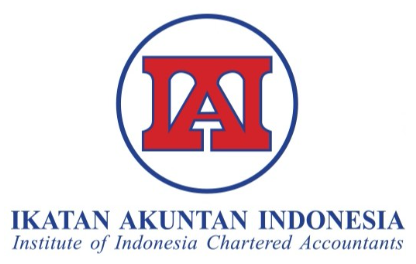BUDGET FORECAST ERRORS AND BUDGET DEVIATION: FINANCIAL CAPABILITY INDEX AS MODERATING VARIABLE
DOI:
https://doi.org/10.28986/jtaken.v5i2.353Keywords:
budget forecast errors, financial capability index, and budget deviationAbstract
The lack of accounting literature that links budget supervision or control with budget realization allows the author to conduct this study. In addition, the main issue of this study is the failure of the local government in planning, implementing and being responsible for the budget resulting in budget surpluses and deficits. Surplus and deficit prove the existence of the budget deviations. The cause of the budget deviation is a mistake in the budget forecast. Some cases of budget deficits in Indonesia prove this. Budget forecast errors have the potential to increase budget deviation due to the role of the financial capability index. The purpose of this study is to examine the role of financial capability index in influencing the relationship of budget forecast errors and budget deviation. The sample used local government in Indonesia between 2016 and 2018 through a purposive sampling technique. Analytical tools use STATA Version 15.1. The results of the study prove that budget forecast errors have a positive and significant effect on budget deviation, and the financial capability index has a positive effect on the relationship between budget forecast errors and budget deviation. Sensitivity testing and additional testing reinforced the initial testing of this study.
References
Ariffianto, M., & Adhariani, D. (2018). Budget surplus determinants in Indonesian Regional Government Budgets from a budgetary slack behaviour point of view. International Journal of Economics and Management, 12(1), 17-29.
Auerbach, A. J. (1999). On the performance and use of government revenue forecast. National Tax Journal, 52(4), 767-782.
Bappenas. (2003). Peta Kemampuan Keuangan Daerah Provinsi Dalam Era Otonomi Daerah: Tinjauan Kinerja PAD, dan Upaya yang Dilakukan Daerah. Direktorat Pengembangan Otonomi Daerah.
Baron, R. M., & Kenney, D. (1986). The moderator-mediator variable distiction in social psychological research: Conceptual, strategic, and statistical considerations. Journal of Personality and Social Psychology, 51(6), 11731182. doi: 10.1037/0022-3514.51.6.1173
Boland, R. J., & Pondy, L. R. (1986). The micro dynamics of a budget-cutting process: Modes, models and structure. Accounting Organizations Social, 11(55), 403-422. doi: 10.1016/0361-3682 (86)90010-3.
Boukari, M., & Veiga, F. J. (2018). Disentangling political and institutional determinants of budget forecast errors: A comparative approach. Journal of Comparative Economics, 46(4), 1030-1045. doi: 10.1016/j.jce.2018.03.002
Covaleski, M. A., & Dirshmit, M. W. (1988). The use of budgetary symbols in the political arena: An historically informed field study. Accounting Organizations and Society, 13(1), 1-24. doi: 10.1016/0361-3682(88)90023-2
Directorate General of Fiscal Balance. (n.d.). Laporan realisasi anggaran. Retrieved from http:// www.djpk.kemenkeu.go.id/? page_id=316
Dubois, E. (2016). Political business cycles 4o years after Nordhaus. Public Choice, 166(1-2), 235-259. doi: 10.1007/s11127016-0313-z
Herianti, E. (2019). Budget turbulence and budget deviation: Do local government have the ability to reduce them?. Jurnal Tata Kelola & Akuntabilitas Keuangan Negara, 5(1), 1-20. doi: 10.28986/jtaken.v5i1.285
Jensen, M. C., & Meckling, W. H. (1976). Theory of the firm: Managerial behavior, agency cost, and ownership structure. Journal of Financial Economics, 3(1976), 305-360.
Johansson, T., & Siverbo, S. (2014). The appropriateness of tight budget control in public sector organizations facing budget turbulence. Management Accounting Research, 25(4), 271-283. doi: 10.1016/j.mar.2014.04.001
Jonsson, S. (1982). Budget behavior in local government: A case study over 3 years. Accounting Organization Society, 7(3), 287-304. doi: 10.1016/0361-3682(82) 90005-8
Jonung, L., Larch, M., Favero, C. A., & Martin, P. (2006). Improving fiscal policy in the EU: The case for independent forecast. Economics Policy, 21(47), 491-534.
Kurrohman, T. (2013). Evaluasi penganggaran berbasis kinerja melalui kinerja keuangan yang berbasis value for money di kabupaten/kota di Jawa Timur. Jurnal Dinamika Akuntansi, 5 (1), 1-11.
Risyanto, H. (2015). Analisis kemampuan keuangan daerah dan kemandirian keuangan daerah serta pengaruhnya terhadap pertumbuhan ekonomi Kabupaten Garut tahun anggaran 2004 -2013. Coopetition, VI(1), 21-33.
Samora, R. (2010). Peta kemampuan keuangan daerah pada pemerintah kota dan kabupaten Se-Jawa dan Bali tahun 2004-2008: Metode kuadran. Jurnal Akuntansi Kontemporer, 2(1), 65-84.
Siregar, B. (2017). Akuntansi sektor publik: akuntansi keuangan pemerintah daerah berbasis akrual. Edisi Kedua. Yogyakarta: UPP STIM YKPN.
Wildavsky, A. (1975). Budgeting: A comparative theory of budget processes. Little. Brown & Co., Boston.
Wirasedana, I. W. P., Sisdyani, E. A., & Setiawan, I. P. E. (2018). Kendali budget ketat pada Pemda di Provinsi Bali dalam menghadapi turbulensi budget. E-Jurnal Akuntansi Universitas Udayana, 25(1), 300-327. doi: 10.24843/EJA.2018.v25.i01.p12
Downloads
Submitted
Accepted
Published
How to Cite
Issue
Section
License

Jurnal Tata Kelola dan Akuntabilitas Keuangan Negara is licensed under
a Creative Commons Attribution-ShareAlike 4.0 International License




















